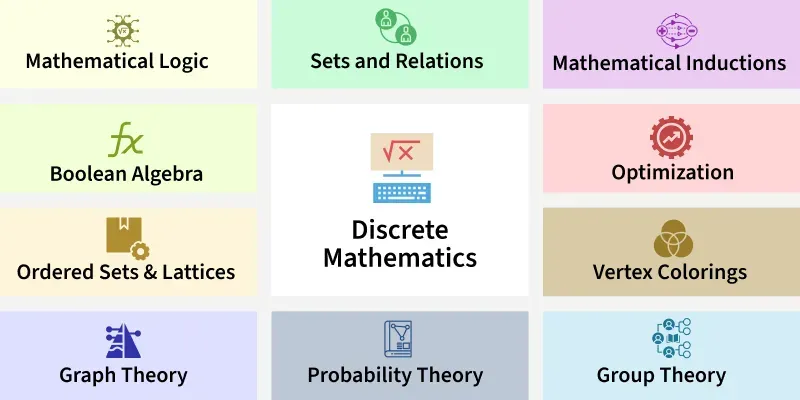Discrete Mathematics Tutorial
Last Updated : 01 Sep, 2025
Discrete Mathematics is a branch of mathematics that is concerned with "discrete" mathematical structures instead of "continuous" ones. Discrete mathematical structures include objects with distinct values, like graphs, integers, logic-based statements, etc.

To explore these concepts in detail, we begin with the following core topics.
Mathematical Logic
Learn propositional and predicate logic, equivalences, proofs, and rules of inference for logical reasoning.
Sets and Relations
Understand set theory, operations, relations, functions, and equivalence relations with real-world applications.
Mathematical Inductions
Explore counting techniques, permutations, combinations, generating functions, and probability concepts.
Boolean Algebra
Study Boolean functions, algebraic theorems, properties, and methods for minimizing Boolean expressions.
Optimization
Learn linear programming, the simplex algorithm, and PERT for solving optimization problems.
Ordered Sets & Lattices
Understand partially ordered sets, Hasse diagrams, and lattice theory in mathematical structures.
Probability Theory
Dive into probability axioms, conditional probability, and common distributions like Poisson, normal, and exponential.
Graph Theory
Explore graph types, algorithms (like Dijkstra’s and DFS), and applications in problem-solving and optimization.
Special Graph
Study Eulerian and Hamiltonian graphs, including algorithms and problems like the Traveling Salesman Problem.
Matching
Learn about matching in graphs, approximation algorithms, and optimization techniques.
Vertex Colorings
Explore graph colorings, chromatic numbers, and algorithms like Greedy Coloring for graph theory.
Group Theory
Understand the basics of groups, subgroups, isomorphisms, and structures like rings and fields.
Quick Links
Access last-minute notes and quizzes to reinforce your learning in discrete mathematics.
Explore
Linear Algebra
Sequence & Series
Calculus
Probability & Statistics
Practice Questions
My Profile